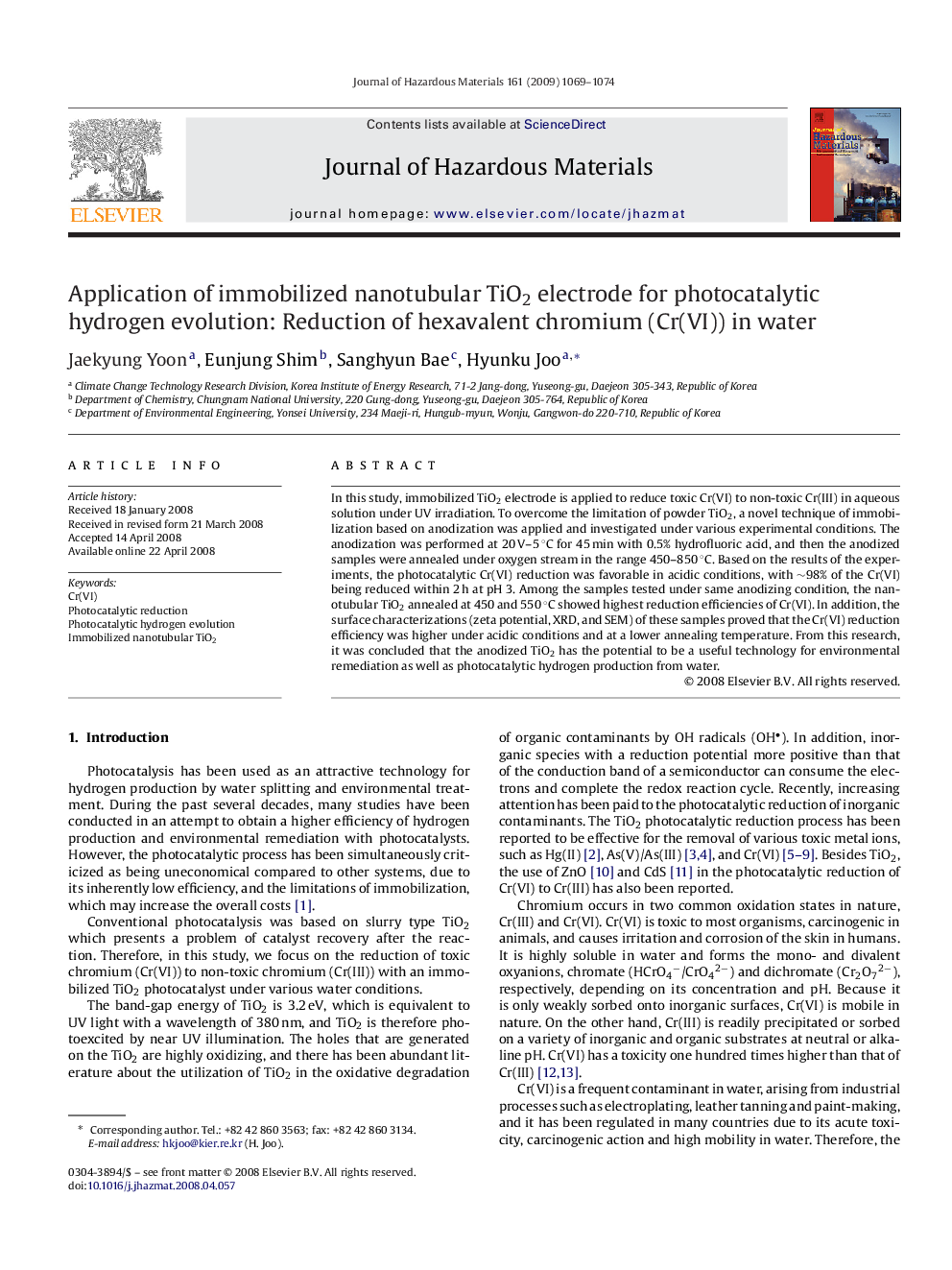| Article ID | Journal | Published Year | Pages | File Type |
|---|---|---|---|---|
| 582675 | Journal of Hazardous Materials | 2009 | 6 Pages |
Abstract
In this study, immobilized TiO2 electrode is applied to reduce toxic Cr(VI) to non-toxic Cr(III) in aqueous solution under UV irradiation. To overcome the limitation of powder TiO2, a novel technique of immobilization based on anodization was applied and investigated under various experimental conditions. The anodization was performed at 20 V-5 °C for 45 min with 0.5% hydrofluoric acid, and then the anodized samples were annealed under oxygen stream in the range 450-850 °C. Based on the results of the experiments, the photocatalytic Cr(VI) reduction was favorable in acidic conditions, with â¼98% of the Cr(VI) being reduced within 2 h at pH 3. Among the samples tested under same anodizing condition, the nanotubular TiO2 annealed at 450 and 550 °C showed highest reduction efficiencies of Cr(VI). In addition, the surface characterizations (zeta potential, XRD, and SEM) of these samples proved that the Cr(VI) reduction efficiency was higher under acidic conditions and at a lower annealing temperature. From this research, it was concluded that the anodized TiO2 has the potential to be a useful technology for environmental remediation as well as photocatalytic hydrogen production from water.
Related Topics
Physical Sciences and Engineering
Chemical Engineering
Chemical Health and Safety
Authors
Jaekyung Yoon, Eunjung Shim, Sanghyun Bae, Hyunku Joo,
